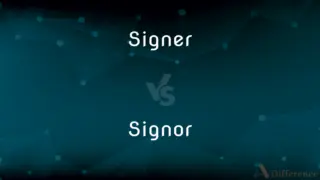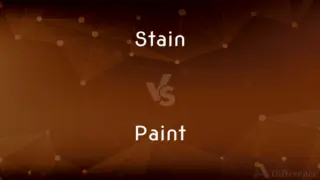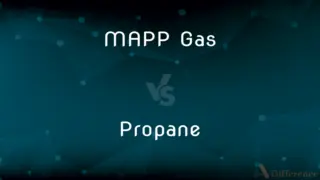Imitation vs. Modeling — What's the Difference?
By Tayyaba Rehman — Updated on October 13, 2023
Imitation is the act of copying or mimicking, while Modeling is the process of representing or demonstrating a specific behavior or system.

Difference Between Imitation and Modeling
Table of Contents
ADVERTISEMENT
Key Differences
Imitation and Modeling are two concepts often explored in the realms of learning and development. Imitation is the straightforward act of copying or mimicking an action, behavior, or item. On the other hand, Modeling involves representing, demonstrating, or exemplifying a specific behavior, system, or process, often for the purpose of teaching or understanding.
In the field of psychology, when a child replicates the behavior of an adult, they are said to be imitating that adult. Conversely, when an individual demonstrates a behavior with the intention of teaching or guiding another, they are said to be modeling that behavior.
Consider the world of fashion. An "imitation" leather jacket mimics the appearance of genuine leather but isn't made from actual leather. In the same domain, a fashion "model" doesn't just wear clothes; they represent a certain look or style, demonstrating how the apparel should appear when worn.
In the arts, Imitation might refer to an artist replicating the style of another artist, perhaps without understanding the deeper nuances. Modeling in the arts could refer to the act of using a live model as a reference for creating artwork, capturing not just the appearance but also the essence of the model.
In education, teachers often model problem-solving techniques, showing students not only the solution but the process to reach it. Conversely, when a student mimics the solution without understanding the underlying process, they are simply imitating.
ADVERTISEMENT
Comparison Chart
Primary Meaning
The act of copying or mimicking.
Representing or demonstrating a behavior/system.
Intention
Often lacks deeper understanding.
Usually involves intention to teach or guide.
Context in Learning
Replicating without necessarily understanding the process.
Demonstrating a process for others to learn.
Material Context
Refers to items that mimic the properties of another.
Using something as a reference or representation.
Depth
Surface-level replication.
Often deeper, capturing essence or process.
Compare with Definitions
Imitation
Mimicry for comedic or satirical effect.
His imitation of the politician had everyone laughing.
Modeling
The act of representing or demonstrating.
He's modeling the correct way to assemble the machine.
Imitation
A thing intended to simulate another thing.
The diamond on her ring was just an imitation.
Modeling
Using a specific system or example as a reference.
Scientists use modeling to predict climate changes.
Imitation
The act of copying or mimicking.
Her singing is a mere imitation of the famous artist.
Modeling
Demonstrating behavior for others to follow.
Parents play a crucial role in modeling good behavior for their children.
Imitation
Replication without understanding.
The robot's speech is an imitation of human conversation.
Modeling
The profession of being a fashion model.
She pursued a career in modeling after college.
Imitation
Imitation (from Latin imitatio, "a copying, imitation") is an advanced behavior whereby an individual observes and replicates another's behavior. Imitation is also a form of social learning that leads to the "development of traditions, and ultimately our culture.
Modeling
Creating a three-dimensional representation.
The artist is modeling a sculpture from clay.
Imitation
The act or an instance of imitating
Gave us his imitation of a famous actor.
Modeling
The act of being a model
When parents eat healthy food themselves, this modeling influences their children's dietary habits.
Imitation
Something derived or copied from an original, often in an inferior way
An undrinkable imitation of real lemonade.
Modeling
The act or art of sculpting or forming in a pliable material, such as clay or wax.
Imitation
Repetition of a phrase or melody often with variations in key, rhythm, and voice.
Modeling
Representation of depth and solidity in painting, drawing, or photography.
Imitation
Repetition of a theme in another voice such that each part continues polyphonously.
Modeling
Visual shape and texture of something regarded aesthetically, especially the human face or form.
Imitation
Made to resemble another, usually superior material
Imitation fur.
Modeling
The act of simulating a complex system by means of a model, especially a mathematical model.
Imitation
The act of imitating.
Modeling
The profession of being a model.
Imitation
A copy or simulation; something that is not the real thing.
Imitation leather
Modeling
Present participle of model
Imitation
The act of imitating.
Poesy is an art of imitation, . . . that is to say, a representing, counterfeiting, or figuring forth.
Modeling
The art of sculpting models from clay etc. to create a representation of something.
Imitation
That which is made or produced as a copy; that which is made to resemble something else, whether for laudable or for fraudulent purposes; likeness; resemblance.
Both these arts are not only true imitations of nature, but of the best nature.
Modeling
The representation of depth in a two-dimensional image.
Imitation
One of the principal means of securing unity and consistency in polyphonic composition; the repetition of essentially the same melodic theme, phrase, or motive, on different degrees of pitch, by one or more of the other parts of voises. Cf. Canon.
Modeling
The profession of someone who models clothes.
Imitation
The doctrine that representations of nature or human behavior should be accurate imitations
Modeling
(mathematics) The construction and use of a computer model of a physical system.
Imitation
A copy that is represented as the original
Modeling
The learning of a new skill by copying other people.
Imitation
Copying (or trying to copy) the actions of someone else
Modeling
The act or art of making a model from which a work of art is to be executed; the formation of a work of art from some plastic material. Also, in painting, drawing, etc., the expression or indication of solid form.
Imitation
A representation of a person that is exaggerated for comic effect
Modeling
Sculpture produced by molding
Imitation
Not genuine or real; being an imitation of the genuine article;
It isn't fake anything; it's real synthetic fur
Faux pearls
False teeth
Decorated with imitation palm leaves
A purse of simulated alligator hide
Modeling
A preliminary sculpture in wax or clay from which a finished work can be copied
Imitation
A replica or reproduction.
The purse was an imitation of a high-end brand.
Modeling
The act of representing something (usually on a smaller scale)
Common Curiosities
Does imitation always lack depth?
Typically, imitation focuses on surface-level replication without capturing deeper nuances.
Is imitation always a negative act?
No, imitation can be a form of flattery or a learning method, but it lacks originality.
Are imitation products considered fake?
Imitation products mimic real ones but aren't the genuine article, so they can be considered "fake" or "replica."
Can modeling be used in scientific research?
Yes, scientists often use modeling to predict outcomes based on data.
How is modeling used in teaching?
Educators model strategies or processes to demonstrate to students how something is done.
How is modeling applied in the arts?
Artists might use live models as references to capture the essence of their subject in artwork.
Can imitation be seen as a form of learning?
Yes, especially in early childhood, imitation is a fundamental learning method.
Is imitation always deliberate?
Not always. Sometimes individuals imitate subconsciously, especially in social contexts.
How does modeling differ in education and fashion?
In education, modeling is about demonstrating a process. In fashion, it's about showcasing clothing or styles.
What's the key difference between imitation and modeling in teaching?
Imitation is copying without understanding, while modeling demonstrates with the intent of imparting understanding.
Can imitation lead to innovation?
Yes, imitation can be a starting point, with individuals later adding their own unique touches.
Does modeling always involve a live demonstration?
Not necessarily. Modeling can also refer to computer simulations or theoretical representations.
Is imitation leather real leather?
No, imitation leather mimics the properties of real leather but is made from synthetic materials.
Can both imitation and modeling be part of the learning process?
Absolutely. While modeling can guide learners, imitation can be an initial step in replicating a behavior or skill.
In what contexts is modeling commonly found?
Modeling is found in education, arts, sciences, fashion, and more.
Share Your Discovery

Previous Comparison
Petite vs. Teen
Next Comparison
Tariff vs. QuotaAuthor Spotlight
Written by
Tayyaba RehmanTayyaba Rehman is a distinguished writer, currently serving as a primary contributor to askdifference.com. As a researcher in semantics and etymology, Tayyaba's passion for the complexity of languages and their distinctions has found a perfect home on the platform. Tayyaba delves into the intricacies of language, distinguishing between commonly confused words and phrases, thereby providing clarity for readers worldwide.















































